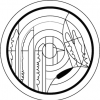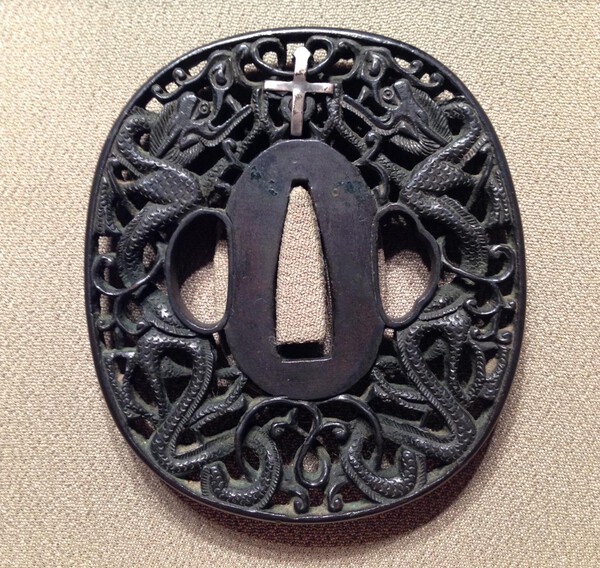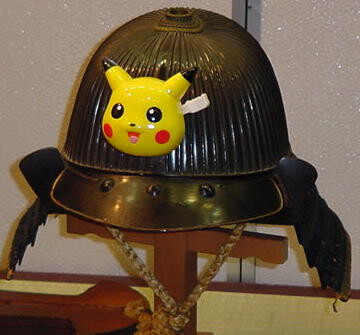-
Posts
994 -
Joined
-
Last visited
-
Days Won
12
Content Type
Profiles
Forums
Events
Store
Downloads
Gallery
Everything posted by Ted Tenold
-
..... and everytime we read about these follies:
-
Ben, it's stunning in my eyes and I love it also. On closer examination, and not intending in any way to be nit-picky, but I believe it is indeed a Peregrine Falcon (Hayabusa) and not a Hawk. The beak notch is the most conspicuous difference between Falcons and Hawks. Living in Montana we have a wide variety of Raptor species including Peregrines, Osprey, Bald Eagles and the massive Golden Eagles. My personal favorite are Kestrels, which are tiny amazing hunters and quite common here. Ferruginous Hawks are probably my second favorites and occasionally seen. Congratulations, it really is a lovely sculpture.
-
Heh heh, I was just going to say: something that will never be completely dust free. Maybe insert a Swiffer into the obi wakizashi style so it'll always be at hand! The only thing I really know about armor is that I don't need another thing for a lifetime to study. If you take Curran's advice as a halloween costume, then perhaps a nice bright LED flashlight as a Maidate for safety!
-
Consult your manual from the Ministry of Silly Walks before going there. Side stepping, high leg lifts, over-striding hops, and other strange leg movements will be required to negotiate the stacks of random stuff that remind one of a hoarder house; fascinating and kind of terrifying at the same time. I have not seen Tsuruta san in a couple of years, but he was always a pleasantly cheerful man. Based on the elements of recent listings, I wonder how much actual personal interaction he's having with his staff these days.
-

Seeking Info On A Gendaito Smith
Ted Tenold replied to Ted Tenold's topic in General Nihonto Related Discussion
No, Joe, I meant it got mixed up with the non-critical references during the move. Because it's smaller than most books, it probably got used to fill a space among other books and periodicals. -
That's funny Tom. I immediately thought of a Yokan fork also. :-)
-

Seeking Info On A Gendaito Smith
Ted Tenold replied to Ted Tenold's topic in General Nihonto Related Discussion
Stephen and Joe; many thanks!!! I moved last year and my GTM is hiding somewhere among the non-critical references still in boxes. Much appreciated!!! Ted -
Anyone out there in the Nihonto universe have info on smith signing by Manju Kunimitsu? 國満 Hawley's KUN573 I have a Gendai Toko Meikan... somewhere... but I I'm unable to confirm if this is one of the three Kunimitsu listed in the index because I've misplaced my copy. Any help appreciated. Cheers, Ted
-
The bands are called "koppamaki" and they are thin strips of wood planed from another source of contrasting wood, they are soaked for pliancy and then glued in place on the surface of the shirasaya standing slightly proud. Usually it's another darker or lighter color of honoki, but I have seen cherry used, and one example of rattan also. They're meant to help manage the seams from splitting through the expansion/contractions of the shirasaya. Out of the dozens I've seen, I have yet to see any that have been cut thick enough to be inset into the shirasaya which that would be both complicated and overkill, but I wouldn't doubt there might be examples of that done.
-

Award Winner Kevin Adams
Ted Tenold replied to Stephen's topic in General Nihonto Related Discussion
Well Done Kevin! I see Red Wing Blackbirds and Bluet Damselflies perched on Cattails like this nearly every spring and summer day here in Montana. Looking at this tsuba, I immediately paint a mental picture of the local wildlife refuge where there are acre upon acre of cattails with Red Winged, and Yellow Headed Blackbirds, as well as the dozens of other flora and fauna. It's a wonderfully peaceful and cathartic time for me every time I walk the trails there, and your work in this tsuba transports me to those moments. In Japanese fittings, this is the kind of connection that is lost on folks that have never been to Japan to see and experience in real time much of the imagery that artists were re-creating. In this work, you've enabled that connection with something familiar, and the viewer can paint a larger mental picture of their own personal experiences.- 19 replies
-
- 10
-

-
Yes John, also a very real possibility. There are a couple more photos like this one floating about, and one showed armor in the background also iirc. A photographer choosing Japanese swords and equipment for a Native American vignette is a little myopic, but then again we can't attempt to apply logic where logic doesn't apply either. :-)
-
I just returned from Japan and went to the National Museum while there. They do allow photos now, but certain items have a "no pictures" sign in front of them, mostly for light sensitivity. I think basically most institutions are starting to just knuckle under on the policy because the throngs of people that just blatently ignore it and/or feign understanding or seeing the no picture policy signs. I visited St. Mark's Basilica in Venice a couple of years ago and it was jam packed with people, nearly all of whom were just filming and snapping away despite the numerous signs in various languages that said not to. The officials and docents were just looking upon all of it with futility written all over their faces. The guides do their best to avert their groups from doing it, but even they give up after a couple of cursory requests. If the officials and docents don't care, they why should they? Slippery slope...
-
I did some research surrounding the first Japanese Ambassador's delegation to visit the US after the Ansei Trade Treaty was signed. One of the things I happened across was a newspaper ad from about 1865 (Baltimore or New York iirc) advertising Japanese swords that could be literally be bought by the barrel. This was several years before the Hatorei. I'm guessing that trade with the various tribes probably included swords because iron/steel weapons and tools of just about any kind were always highly valued trade goods with the Native Americans.
-

Uesugi Kenshin's Mountain-bird-hair Sanchomo/Yama-tori-ge
Ted Tenold replied to Bugyotsuji's topic in Nihonto
Also an interesting point, is that every time I hear someone say "Yamatorige" in the presence of a high level scholar, they are corrected to pronounce it "Sanchōmō". I myself was corrected by Mr. Tanobe some years ago, and he was kindly insistent that it was no other way than that. -
It's massive in it's current form, but also consider it's osuriage. What it must have looked like and weighed when it was ubu. Another consideration that never ceases to amaze me is that the guy that first used it was likely about 5 feet tall and 110 lbs.
-

Attention Namban Collectors ....
Ted Tenold replied to nagamaki - Franco's topic in Auctions and Online Sales or Sellers
Peter, Thank you for elaborating. Ted -

Attention Namban Collectors ....
Ted Tenold replied to nagamaki - Franco's topic in Auctions and Online Sales or Sellers
Hi Peter. You present some interesting opinions. First of all, I posted it as an example of Namban style in shakudo, not as a focus of christian artifacts. The cross addition is just a neat aside to the tsuba as a rarely encountered type in the overall body of works we see. Yes, of course it was added later. The paper says "later addition" also, but without any indications of period for either the tsuba, or the added element of the cross which no one could reasonably know. "Later" being any time after the original manufacture of the guard is also very subjective; 200 years, 10 years, 20 minutes? Your three different sides relating to Namban could arguably be applied to a great number of Japanese sword fittings at large. Fad and fashion played a large part in the design sensibilities that drove many other makers, schools, and styles. Soten, Hirata, Hirado, Higo, Kumagai, Topei, just to name a few. Namban is just another, and not a unique way for a bushi or a merchant to outwardly express their personal interests in one of the very limited ways it was possible for them to do so. So, putting the cross aside for a moment, tell me again why is it that a Namban collector might not be attracted to a papered shakudo Namban tsuba? -

Attention Namban Collectors ....
Ted Tenold replied to nagamaki - Franco's topic in Auctions and Online Sales or Sellers
The kozuka kogai are indeed quite rare. I've seen a koshirae with all namban fittings ensuite, including the menuki and the kurigata which were very interesting and I've not encountered another set like it since. The fuchi and kashira had sleeves to provide a back drop for the openwork. They were iron and would have matched the futokoro set very nicely. Rarely you can see Namban tsuba in shakudo rather than iron. But more rarely, this one has had the addition of a Portuguese Christian cross at the top. Kind of the "Holy Grail" of Namban (pun intended, not apologizing ). Also, it has the same cross added to both sides of the tsuba. Has NBTHK Hozon paper also. -
Well crikey mate! With such a fantastic curriculum vitae as this, what could possibly go wrong? You've been offered some wise and prudent advice from folks here, many of whom have been collecting for decades, have fine swords in their collections, studied under some of the best guidance on the planet, seen magnificent works in hand, yet *still* find the humility to admit that they don't know all the answers because they understand they'll never even know all the questions. Just because they don't tell you what you want to hear, doesn't make them wrong, or you right.
-
The nakago is not split. It's just an illusion due to the nakago mune and ha have slight roundness rather than being flat, so the lighting is reflecting that roundness where the radius bounces the light directly into the lens.
-

Question About Sword Restoration
Ted Tenold replied to Dtread918's topic in General Nihonto Related Discussion
Chopsticks will work in a pinch if you really need one, but in the long term are often very soft and will deform after a few cycles of installing and removing. Good mekugi are made from susudake and even then, from a particular place in the cross section of the stalk. Get on line or go to a craft store and look for Clover Takumi Bamboo Knitting Needles (see below). They are made from seasoned bamboo, and will withstand the use as mekugi much better. Also, they come in a variety of guages so you can closer match the maximum taper end diameter without excessive carving needed. http://www.clover-usa.com/en/50-takumi-needles- If you want to make them out of section of bamboo, then traditionally the mekugi should be carved near the outside wall of the susudake (hardest, darkest) so that it is the side of the mekugi that will make contact the nakagoana. When looking at many mekugi whether shirasaya or for koshirae, the cross section at the top will show it has a darker side (not like Guido's evil twin though ). http://www.namikawa-ltd.com/product/131 -
-

Is It Ever At All Possible To Be Content
Ted Tenold replied to Alex A's topic in General Nihonto Related Discussion
-
On an older sword, what could appear as ububa may be just an artifact of the entire hasaki having been reset as a matter of correction of curvature, and/or removal of chips. You have to look at the sugata of the sword as a whole, the relationship of the yakiba width and shape in relation to it, as well as the togidamari to make any fundamental determination of ububa in a blade older than about Shinto period. I would not say that ububa cannot be seen in Koto period swords, but just because the edge is unsharpened from the hamachi forward, does not mean it is actually ububa, from the time the sword was forged.





